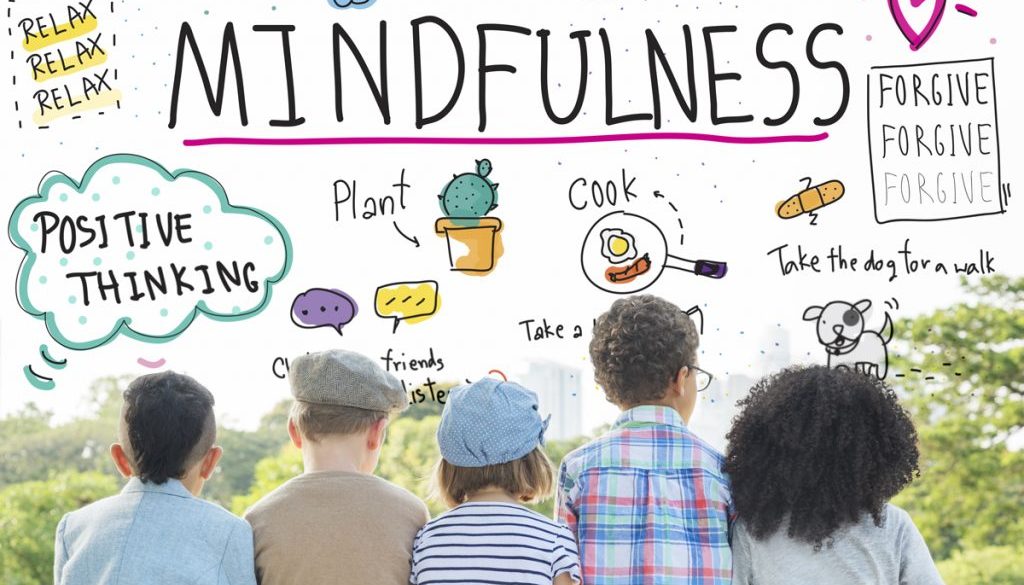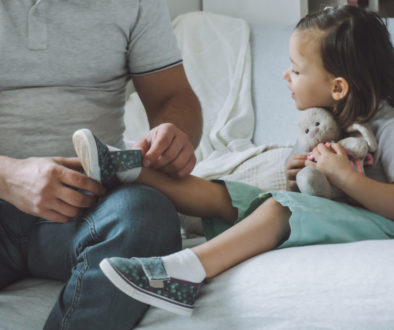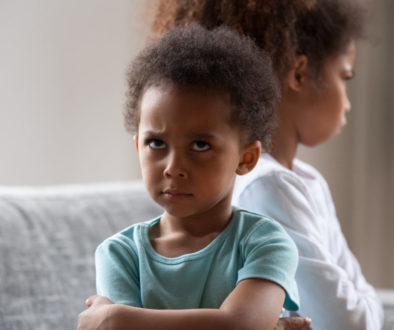Mindfulness for Children

It is no secret that 2020 has been filled with many challenges. The world is rapidly changing from day to day and we are facing new stressors that we never anticipated. With all of these changes, there has never been a better time to start taking care of our emotional well-being than right now. One simple technique that many people turn to is called “mindfulness.” This buzz word has grown in popularity over the last few years and can be practiced in so many different ways, ranging from yoga to intricate coloring books to walking exercises. Despite the new and renewed interest in the art of mindfulness, it has been used as an effective way to cope for thousands of years across multiple cultures.
Simply defined, the practice of mindfulness focuses on just being in the present moment with full acceptance and without judgment. The benefits of using mindfulness include, decreasing stress and anxiety, improving physical and mental health, promoting better sleep, improving focus and awareness, improving impulse control, increasing compassion and kindness, and promoting stronger relationships.
Children face new and stressful challenges as they develop through each age and stage of development. Each developmental stage of a child’s life brings new challenges to navigate, from forming new relationships to transitioning to school, to learning to be more independent. Practicing mindfulness can help children to reduce stressors and build new emotional regulation skills as they begin to tackle these new experiences.
Mindfulness can be incorporated into each developmental stage of a persons’ life from birth through adulthood. While you cannot teach an infant to take belly breaths, you can build a foundation for mindfulness through intentional interactions and a compassionate presence while simply gazing into your baby’s eyes for a few interrupted minutes.
So let’s discuss a few ways to practice mindfulness throughout different stages of development!
Ages 0-2
Taking care of an infant can be exhausting, and although we cannot necessarily “teach” mindfulness at this age, it is important to remember that children learn through our modeled behaviors. Children and parents feed off each other’s emotions, thus when a child is stressed and starts crying, the parent may become anxious, which may continue to trigger additional anxiety in the child.
A helpful practice in these times, is a popular mindfulness exercise called S.T.O.P.
- Stop. Just take a minute to pause, no matter what you’re doing.
- Take a breath. Feel the sensation of your own breathing, which brings you back to the present moment.
- Observe. Acknowledge what is happening, for good or bad, inside you or out. Just note it without judging it.
- Proceed. Having briefly checked in with the present moment, continue with whatever it was you were doing.
Ages 2-4
We have all heard of the terrible twos! Children in this stage of developmental often exhibit challenging behaviors. In addition to becoming more independent, they are also learning new skills at an astounding rate and may have difficulty regulating their emotions. During this stage, practicing mindfulness is key. It is so important to practice mindfulness into everyday activities, not just when challenging behaviors arise.
Mindfulness is a great tool to teach kindness and respect. At this age, many caregivers focus on teaching their child to say, “I’m sorry,” but instead, try to focus more on teaching your little one forgiveness; of both themselves and others.
Mindfulness can help create feelings of gratitude and curiosity. Ask your child what they are feeling in their bodies. Create simple dialogue that encourages being fully present. This is a great stage to indulge the senses as a tool for practicing mindfulness. Encouraging your child to explore what they can hear and smell can help quiet a toddler’s mind and teach them to be present in the moment. Remember, children learn best through play, so make up fun games focusing on noticing the five senses.
School Age
Many school-aged children and teenagers struggle with symptoms of anxiety and depression. Two of the main keys to mindfulness are stress reduction and self-acceptance. At this age, children and teenagers can learn mindfulness techniques in more practical and tangible ways. As learning to regulate emotions is such an important skill during the school-aged years, mindfulness techniques such as the S.T.O.P. method can be helpful in building the ability to self-regulate.
Remember, mindfulness is simply… noticing what is happening right now.
When your child is experiencing an intense emotion, try to encourage them to notice their five senses and physical sensations. Encourage them to tune in to their bodies by doing a mindful body scan. Ask them to go through each major body part (feet, legs, thighs, bottom, stomach, and so on all the way up to their head) to notice what their body may be experiencing. Maybe they feel tightness or pain, or maybe they can feel a warmth or other positive sensation.
Mindfulness is also about noticing what their mind is doing in that present moment. Encourage them to notice their thoughts and feelings, without judgement, without labeling them as good or bad, and without controlling them or allowing them to have control. It is natural for our minds to begin to wander, so when they notice their mind wandering, remind them to accept it, and re-focus.
Simply noticing what is happening physically and emotionally to their bodies, can help ground and re-center some of the big emotions that children and teens are experiencing.
Trying to keep your teenager disconnected from social media and their phones can be challenging, but the benefits to talking and checking in with your teen without technology, can be much more powerful. When your child is on their phone or computer, or playing games, it’s easy to follow suit and do the same, but this is a perfect opportunity to model staying present and engage with your child.
Choose your thoughts carefully. Keep what brings you peace and let go of what doesn’t. Happiness is only one thought away.
– Nishan Panwar.





